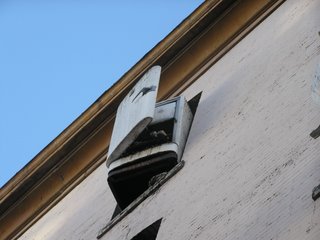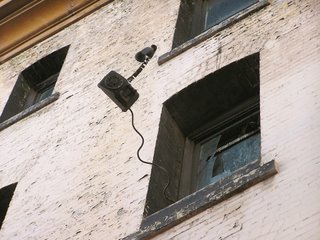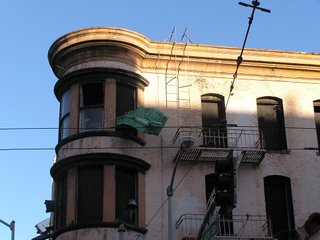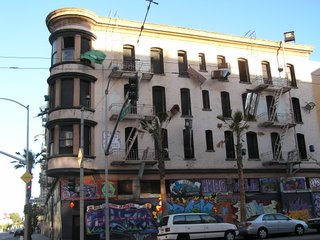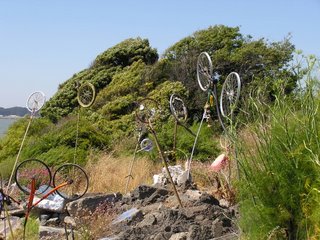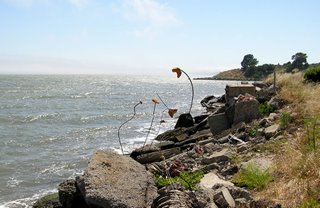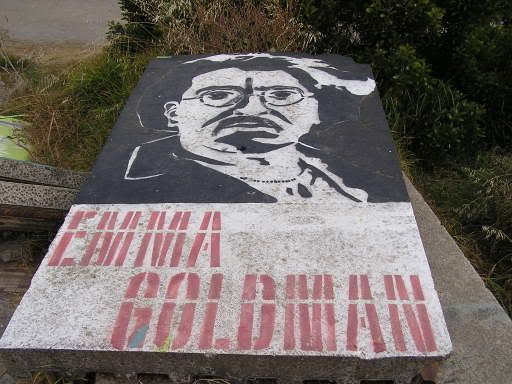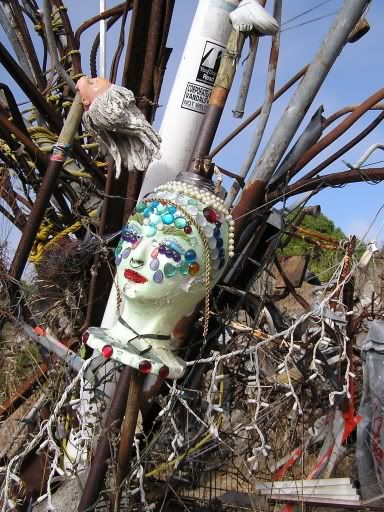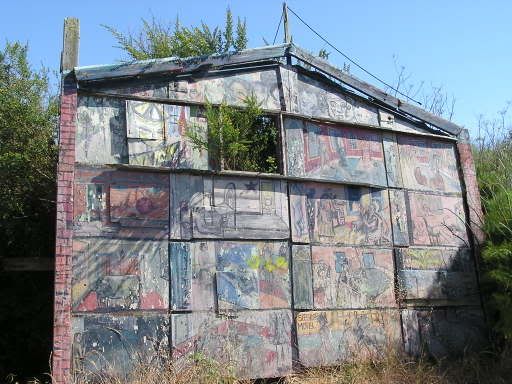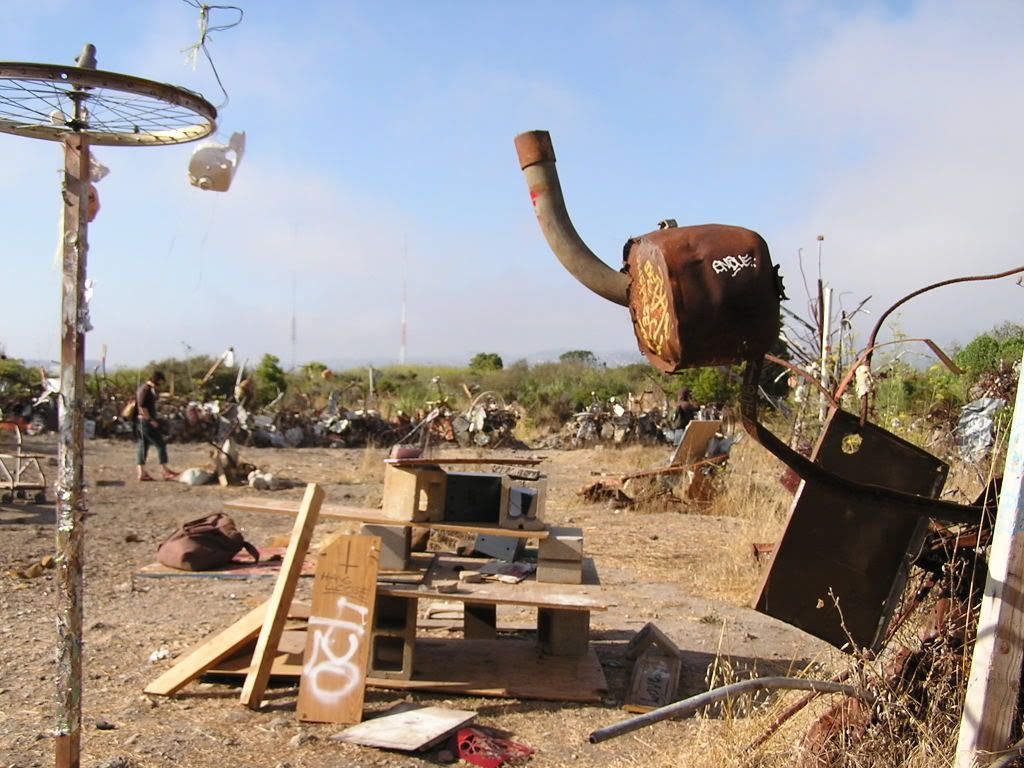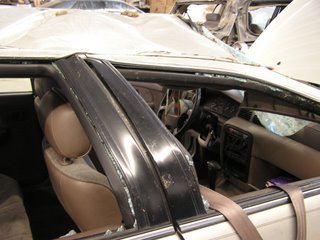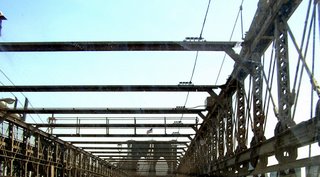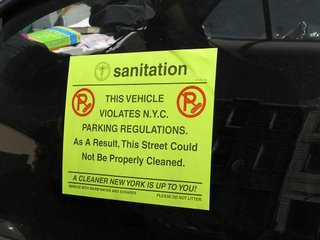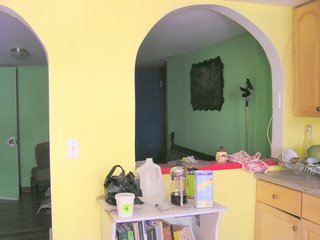This article about the South Central Urban Farm appeared in today's New York Times. To learn about the battle against eviction that is going on, or to donate money so that the land the farm is on can be saved, you can go to their website:
Also, some of the people who are camping out on the farm in order to stop the eviction have set up a blog documenting their efforts here:
Hollywood Stars Shine Down on Protest to Preserve an Urban Farm
By
RANDAL C. ARCHIBOLDPublished: June 9, 2006
LOS ANGELES, June 8 —
Daryl Hannah and John Quigley spoke from a walnut tree last month.
Children gawked. Grown-ups gawked. And several television camera crews gawked, their lenses pointed upward to capture her every move.
"Hi guys," Ms. Hannah called down cheerfully from a narrow plank wedged among the limbs.
Ms. Hannah, who has played an android, a mermaid and a 50-foot woman in the movies, was pulling a stunt, but not for the pictures. She was trying to save a farm, in this case the South Central Farm. Schools in Los Angeles are deteriorating. Gang warfare has increased in some areas. Many people can scarcely afford homes.
But for a certain set of celebrity environmental activists, it is the farm, and the threat of a developer's bulldozer clearing away the cactuses, corn, squash, medicinal herbs and other plantings of mostly Latino squatters on a nearly 14-acre verdant area surrounded by a patchwork of warehouses, that commands their intervention.
For the past few years the scene here, in an area the city now officially calls South Los Angeles, has played out as one of those intermittent urban dramas not quite at the forefront of the public (read: media) consciousness but not quite fading away either.
This time the celebrity-tinged vigil might pay off with a Hollywood ending. The Annenberg Foundation on Wednesday pledged an unspecified sum — the developer had asked for about $16 million — to the
Trust for Public Land, a conservation group, to buy the land and preserve it.
"The monetary issue is now off the table," Dan Stormer, a lawyer for the farm, said Wednesday night after getting word, setting off cheers and song among the farmers.
Cut. Wrap.
Well, hold on. The developer who owns the land, Ralph Horowitz, has not sent word on whether he will accept the deal. He did not answer telephone messages on Thursday.
A cliffhanger.
Ms. Hannah said the cause has drawn so much star power because more is at stake than the fate of what organizers call "the largest urban farm in the country." The farm, she said, has come to symbolize a lost way of life, a joining of community against the urban tide.
"It represents possibility on so many different levels," she said, descending the tree to terra firma, where Joan Baez has strummed the guitar,
Danny Glover has walked among the crops and Ed Begley Jr.,
Martin Sheen and others have taken their turns before the cameras.
"It's great for community," Ms. Hannah added, the howl and clanging of nearby trains breaking the idyllic air. "And one thing responsible for the breakdown of society is a lack of community."
It's also a bitter fight over real estate that shows even the bleakest stretches here are not spared. The farm emerged after the 1992 riots when the city, which had bought the land from a developer six years before, leased it to the Los Angeles Regional Food Bank and allowed the farmers, who organizers say now number some 350, to move in and grow crops.
Most are Mexican and Central American immigrants who raise the crops, divided into plots by mazelike fencing, for food. Some of them, the LA Weekly has reported, left for other community gardens over complaints of browbeating from the farm leadership, which the leadership has denied.
Josefina Medina has grown fava beans, flowers, nopales — a kind of cactus pear — and other plants for more than five years, hoping to instill in her children and grandchildren a sense of nature and the agrarian culture of her native Puebla, Mexico.
"Smog is at a very high level here and many children suffer from asthma," Ms. Medina said at a candlelight vigil at the farm. "This farm cleans the air while teaching our children about their roots, that our ancestors grew these kinds of plants."
In 2003, Mr. Horowitz, the original owner, exercised his right — after legal maneuvering with the city — to buy the land back. Since then, he has battled with the farmers and their lawyers to get them off the land. Local news accounts in the past year have quoted him as planning a warehouse there.
Things came to a peak in late May when an option for the Trust for Public Land to buy the property expired, with the group having raised only about half of the $16 million purchase price. That intensified hand-wringing among city officials, advocates for the farmers and representatives of nonprofit organizations, who reached out to Mr. Horowitz to negotiate further.
To put public pressure on preserving the farm, organizers enlisted celebrities, including Julia Butterfly Hill, an environmental activist known for sitting in a redwood for two years in the late 1990's to protest clear-cutting.
Ms. Hill climbed the walnut tree and set up camp and called a friend, Ms. Hannah, who pledged to stay on the farm, sometimes in the tree, sometimes in a tent, until its future was secure. Other recent visitors included Mimi Kennedy of the television series "Dharma & Greg" and
Alicia Silverstone from the movie "Clueless."
Leonardo DiCaprio sent a letter of support from a movie set in Africa.
"It's very exciting," Ms. Hannah said of the newest turn in the story, "but we are keeping our fingers crossed."

